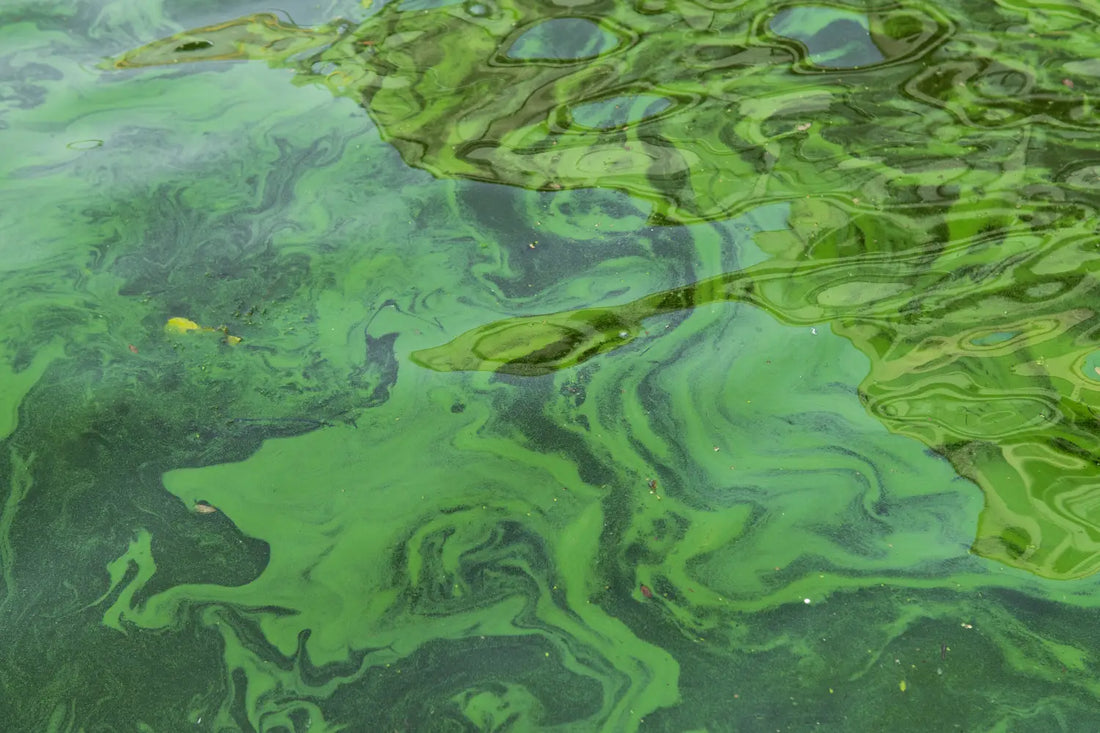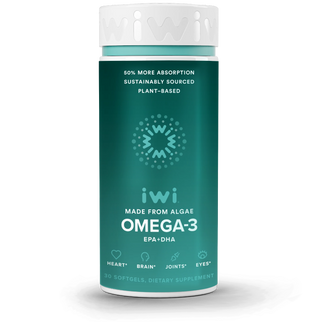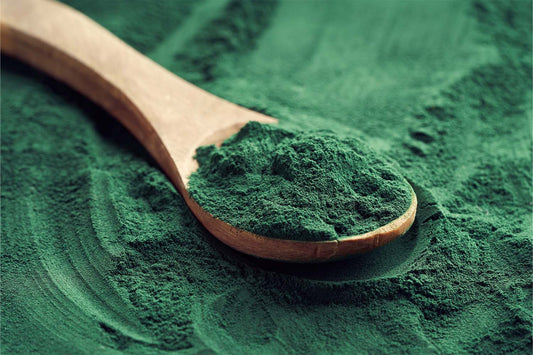Have you ever wondered if that seaweed clinging to your foot at the beach is a plant or something else? You’re not alone. It’s a commonly held belief that algae, with its green appearance and capability to photosynthesize, is a member of the plant kingdom (Plantae) — but the truth is a little more complex.
Technically, algae encompasses a diverse group of aquatic plants and organisms. As a result, algae stands at a fascinating crossroads of biology, exhibiting characteristics of both plants and protists.
In this article, we’ll delve into the intriguing world of algae, exploring the various species of algae and their types, examining their unique structures, life cycles, and how they differ from true land plants in the kingdom Plantae.
We'll also uncover their roles in ecosystems, from the oceans to freshwater habitats, and how humans have harnessed their potential for our benefit. So, whether you’re an avid botanist, an environmental enthusiast, or just curious about algae, buckle up for a deep dive into the green, red, brown, and blue-green world of algae!
What Is Algae and What Are Its Different Types?
Algae is a collective term used to describe a diverse group of photosynthetic organisms that are primarily aquatic. Ranging from microscopic entities and unicellular filamentous forms to large seaweeds and multicellular structures like kelp, they’re among our planet's most resilient life forms.
The word "algae" itself is derived from the Latin word “alga” which loosely translates to seaweed, but the organisms it now represents go beyond the familiar fronds that wash up on the beach.
As such, algae can be broadly classified into several types:
- Green algae, or Chlorophyta, are usually found in freshwater habitats but also exist in marine environments. They’re particularly interesting because they are considered the closest relatives to land plants.
- Red algae, or Rhodophyta, are predominantly marine organisms, often found in warmer, tropical waters. They’re well-known for their ability to thrive in deeper waters, thanks to their unique photosynthetic pigments.
- Brown algae, including the giant kelp, are primarily marine, often found in cool, coastal waters. Some can form extensive underwater forests, providing crucial habitats for a plethora of marine organisms.
- Blue-green algae, or cyanobacteria, are a bit of an outlier. Unlike the others, they’re actually bacteria but are commonly referred to as algae due to their ability to photosynthesize. They are found in various habitats, from marine to freshwater, even terrestrial.
- Diatoms are a group of algae that are encased within a unique cell wall made of silica. These microalgae are hugely important as phytoplankton, forming the basis of many aquatic food webs.
- Dinoflagellates, another group of microalgae, are known for their role in creating bioluminescence in the sea, and unfortunately, some species are known to cause harmful algal blooms.
How Does Algae's Anatomy and Life Cycle Differ from Land Plants?
Unlike land plants with specialized tissues and organs such as true roots, stems, and leaves, algae display various structural forms.
Algae can exist as single cells (unicellular), colonies of cells, or large multicellular forms such as the giant kelp. Their cell structure can be simple, as in prokaryotic cyanobacteria, or complex, in eukaryotic organisms where the cells contain distinct organelles and are often encased in a cell wall.
Many algae are also planktonic, meaning they float freely in the water column, and some are equipped with flagella, whip-like appendages that enable movement. In contrast, land plants are typically rooted to the ground and non-motile.
The life cycle of algae is equally varied and often quite different from that of land plants. Some algae reproduce asexually via simple cell division or the release of spores, while others engage in sexual reproduction with the production of specialized cells or gametes.
The most significant difference lies in how certain groups of algae, like green algae, can switch between asexual and sexual modes of reproduction, and between unicellular and multicellular forms, depending on environmental conditions. This variability in life cycle patterns, referred to as the alternation of generations, is more complex and diverse in algae than in most land plants.
Is Algae Considered a Part of the Plant Kingdom?
While earlier systems of biological classification included algae in the Plant Kingdom (Plantae), contemporary scientific consensus often places them outside of it. The decision is heavily rooted in the biological differences between algae and land plants.
Land plants (Embryophytes), which include mosses (Bryophytes) and other flowering plants, share several unique characteristics that algae do not possess. For instance, they all undergo a particular type of life cycle involving an embryo stage, something algae lack.
Moreover, algae exhibit greater diversity in terms of cell structure, membranes, pigments, habitats, and reproductive strategies. For instance, blue-green algae (cyanobacteria) are prokaryotic, meaning their cells lack a distinct nucleus, a feature that land plants, being eukaryotic, do possess.
Based on these differences, most algae are now placed in separate kingdoms, namely Protista and Chromista. Green algae, however, which are more closely related to land plants, are sometimes considered part of Plantae, but this remains a topic of ongoing debate in the scientific community.
Understanding where algae fit into our biological classification systems is more than just semantics; it provides insights into the evolutionary history of life on Earth, hinting at our own ancestral connection to these diverse and vital photosynthetic organisms.
What Role Does Algae Play in Photosynthesis and Ecosystems?
Algae are amongst the world's most prolific photosynthetic organisms, harnessing sunlight to transform carbon dioxide and water into glucose, a type of sugar that fuels their growth. This process, known as photosynthesis, relies on photosynthetic pigments, particularly chlorophyll, which captures light energy and initiates the chemical reactions involved.
In addition to producing their own food, algae also play a crucial role in global carbon cycling. Through photosynthesis, they absorb significant amounts of carbon dioxide, a greenhouse gas, thereby helping to regulate Earth's climate.
Moreover, photosynthesis releases oxygen as a byproduct. Algae, particularly the tiny, floating phytoplankton found in oceans and freshwater habitats, contribute a large portion of the world's oxygen supply, supporting life both in water and on land.
Beyond these global impacts, algae play a key role in local ecosystems. They form the base of many food chains, providing nutrition for a wide range of organisms, from tiny zooplankton to large marine mammals. They also create habitats for other aquatic organisms, with structures like kelp forests offering shelter to a myriad of species.
Some algae have evolved symbiotic relationships with other organisms. For instance, lichen is a partnership between an alga and a fungus, where the alga supplies food via photosynthesis, and the fungus provides protection and absorbs water and nutrients. As another example, zooxanthellae and corals have a foundational symbiotic relationship, showcasing the importance of algae in coral reefs. In fact, coral bleaching is actually a result of the ocean’s pH impacting sensitive algae, which then leads to bleaching.
Although not classified as plants, algae and land plants share a common ancestor. It's believed this ancestor was a type of green alga that colonized land around 500 million years ago, giving rise to modern plants. Unlike land plants, however, algae do not produce complex structures like flowers, fruits, or seeds, instead relying on simpler mechanisms for reproduction and dispersal.
What Are the Uses and Impacts of Algae on the Environment?
Algae have numerous beneficial uses. Certain species are harvested for their nutritional content, being rich in protein, vitamins, and beneficial fatty acids. Algae are used in various industrial processes, too, such as the production of biofuels, and their extracts can be found in products ranging from cosmetics to ice cream.
Algae can be used as fertilizers in agriculture due to the rich nutrient content. Certain types of algae can also improve soil quality by enhancing its structure and increasing its capacity to retain water.
The diverse group of organisms we call “algae” continues to surprise us in terms of ecology importance, its potential uses, and the insights it provides into the history of life on our planet. We’ve only just begun to explore the potential benefits of using algae as a sustainable source of food.
How Is Algae Used in iwi life's Products?
iwi life has embraced the power of algae in an innovative and sustainable manner, creating plant-based omega-3 supplements from Nannochloropsis, a type of marine microalgae known for its high content of omega-3 fatty acids (particularly EPA and DHA).
Algae are a natural and sustainable source of these essential nutrients. Unlike fish, which accumulate omega-3s by consuming algae lower in the food chain, iwi life goes straight to the source. This "farm-to-tablet" approach bypasses the environmental impacts associated with commercial fishing, such as overfishing and bycatch.
Moreover, iwi life farms its algae without chemicals, instead cultivating them in arid, non-arable land using salt water. This process doesn't compete with traditional agriculture for resources, reaffirming iwi life's commitment to sustainability and environmental stewardship.
The brand is built upon the understanding that health and wellness are intricately tied to the health of our planet, reflecting the interconnectedness of all life.
So, Is Algae a Plant or Not?
To wrap things up, algae are a fascinatingly diverse group of organisms that occupy a unique space in the biological world.
They're photosynthetic like plants, contributing significantly to global oxygen production and carbon dioxide absorption. They also play crucial roles in various ecosystems, provide numerous benefits to humans, and even serve as key ingredients in sustainable products like those from iwi life.
However, while algae share some characteristics with plants, scientifically, they aren't classified as part of the kingdom Plantae. Instead, they span multiple kingdoms, reflecting their diversity and the complexity of life's evolutionary history. Algae's structural simplicity, lack of true roots, and differences in life cycles set them apart from land plants.
But does it really matter if algae are plants or not? In the grand scheme of things, maybe not. What's important is understanding the crucial roles they play in our world and the potential they offer for a sustainable future. After all, no matter how we classify them, algae are undeniably powerful, productive, and fascinating organisms.
As we continue to learn about the complexities of life on Earth, one thing remains clear: Every organism, including algae, plays an important role in our global ecosystem.
Interested in learning more about algae and their incredible potential? Be sure to visit the iwi life blog for more insight, and stay tuned to our ongoing exploration of these remarkable organisms.
Sources:
Algae As Promising Organisms for Environment and Health | PMC
Algae | Etymology, Origin and Meaning | Etymonline
Cyanobacteria: Model Microorganisms and Beyond | PMC
The Origin and Early Evolution of Eukaryotes in the Light of Phylogenomics | PMC
What Are Algae? | Live Science
Kingdoms Protozoa and Chromista and the Eozoan Root of the Eukaryotic Tree | PMC
Save the Plankton, Breathe Freely | National Geographic Society


















